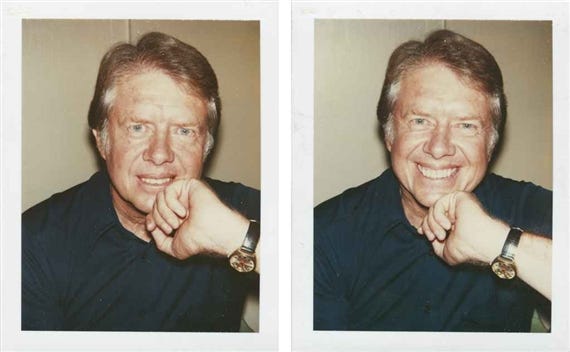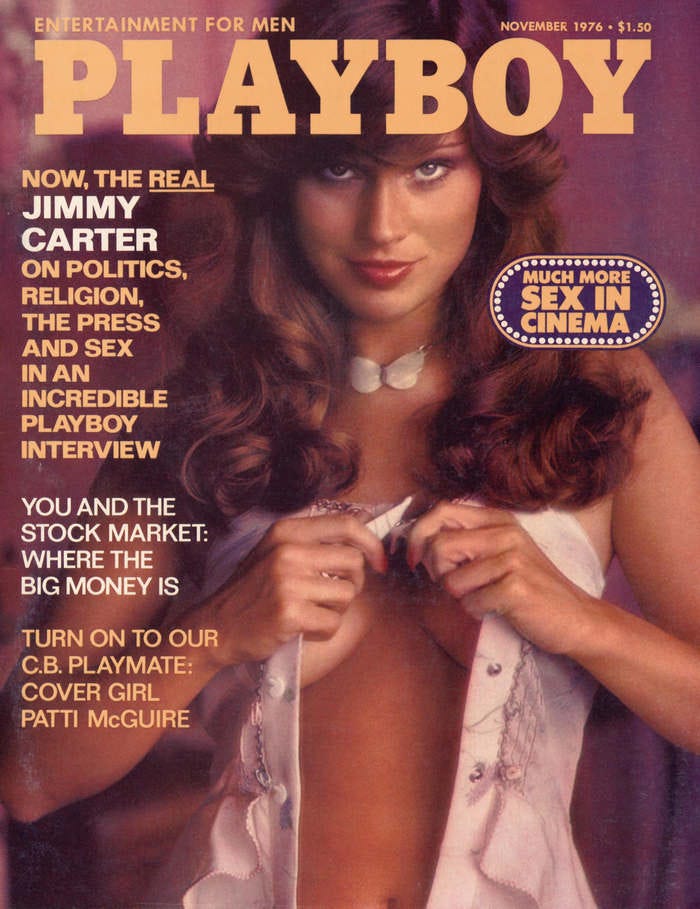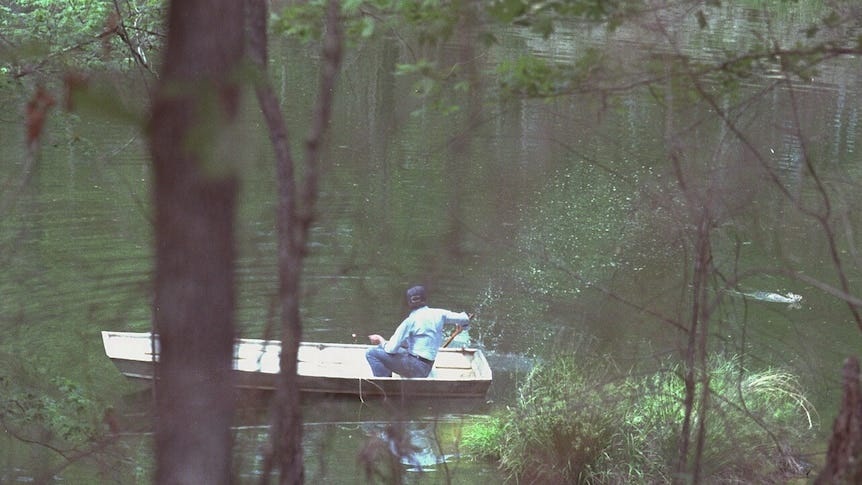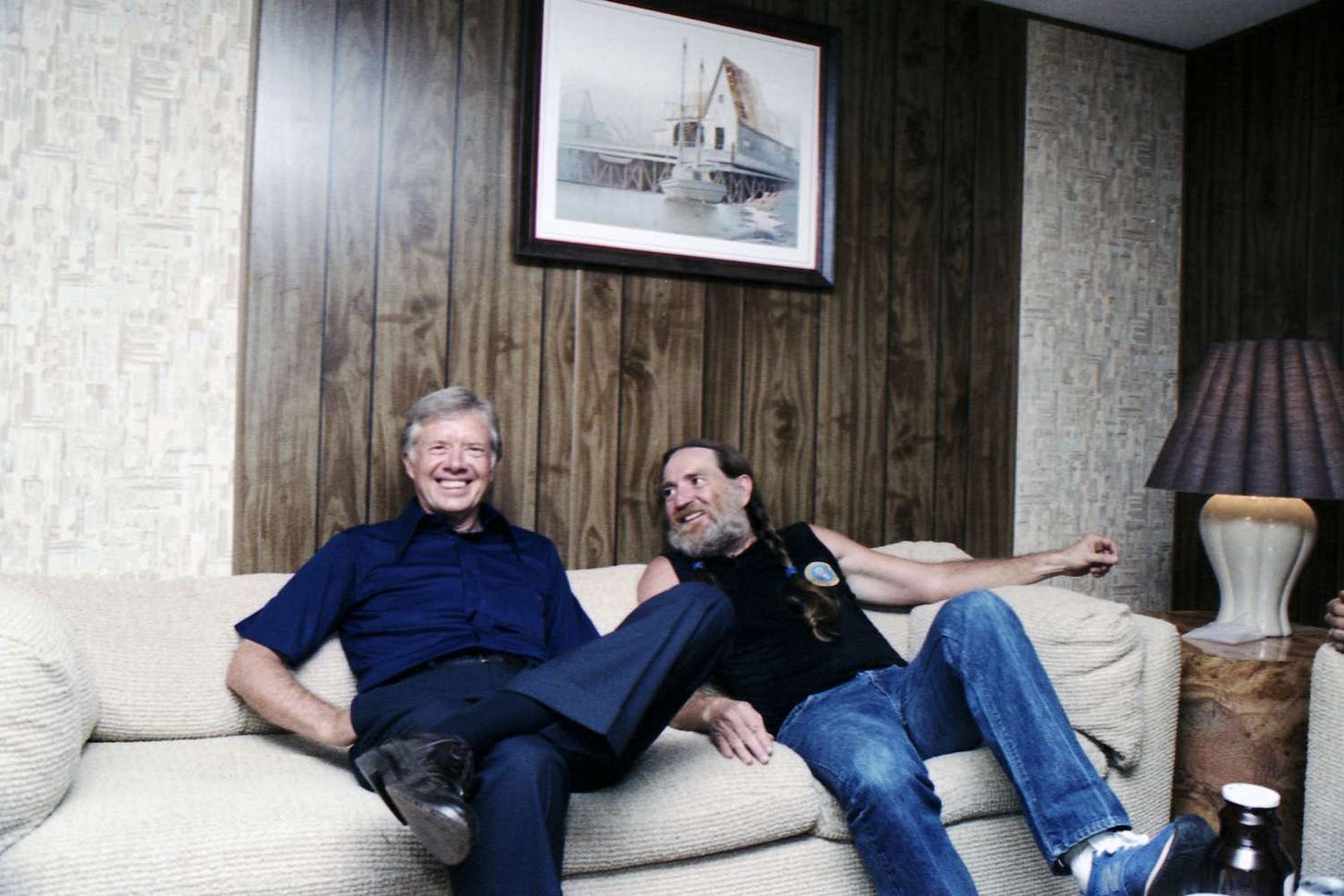My intent for this Substack is not to turn it into the Obituary section of the newspaper, per se. But the passing of Rickey Henderson prompted a few words, and yesterday’s passing of President Jimmy Carter prompts a few more.
I was born in August 1979, which means I lived through about 16 months of Carter’s presidency. But unlike my there-and-then relationship with Rickey, I was never a cognitive, participating member of a world where Jimmy Carter was at his most culturally relevant. He was just before my time; I never once sat in a classroom with his official presidential picture on the wall, the way that Ronald Reagan and George Bush loomed over every one of my grade school Social Studies classes.
For most people my age and younger, Jimmy Carter had a bit of a bad rap. His perception was that of a good, well-meaning man who wasn’t really up to the job. I remember an old SNL skit that ran somewhere after the 1992 election, where Dana Carvey’s Bush I, bitterly accepting his loss to Bill Clinton and his fate as a one-term president, screams out in anguish, “I’M A JIMMY CARTER!”
It was the ultimate ignominy. Growing up, that’s pretty much how people thought of Carter, when they thought about him at all.
But over the past 45 years, as the American political world changed in so many cataclysmic ways since his presidency—and as he lived on long enough in the background as these changes occurred—Carter somehow grew in stature. Yes, his one, lonely term had plenty of struggles (stagflation, energy, Iran) and only the occasional triumph (the Camp David Accords). But there was no doubt that he was trying, and there was no doubt that his heart was in the right place. And while that might not seem like much, not every president who followed can claim the same. Plus, after he got out of office, he did all sorts of admirable stuff for the world, most notably founding Habitat For Humanity and cheering on the Atlanta Braves through a bunch of tough World Series losses in the ‘90s.
There are lots of great pieces about Carter that ran today, and I’m not going to attempt to write anything comprehensive, or even particularly thoughtful, about him and his legacy. But because a mountain of a man died, I thought I’d share a couple items that came to mind.
1. Playboy Interviews Were Once an Essential Part of the American Experience. Carter’s Was Probably the Most Famous Ever.
The cultural importance of Playboy feels quaint now, but it used to be a genuinely big deal. Where else could a sophisticated gentleman read an excerpt from the latest Norman Mailer piece, peruse the year’s newest advances in hi-fi technology, get a couple good jokes to share with the fellas at the country club, and ogle dozens and dozens tits? Even taking all the sex out of the equation, old issues of Playboy are far and away the best old magazines to read through, simply because there was no other magazine that always felt so exactly of its cultural moment. (Of course, telling someone to enjoy Playboy while “taking all the sex out of the equation” is akin recommending that they take a trip to Kauai but skip the beach.)
Among Playboy’s mainstays was its monthly interview. And the cultural cache that came with being the interviewee cannot be overstated—those 12 interviews each year were generally the most fascinating and famous people in the world. People like MLK and John Wayne and Joe Namath and Bob Dylan. This was heady, A-list stuff.
In November 1976, as the Democratic candidate running against Gerald Ford, Carter gave such a Playboy interview.1 I imagine that Carter’s Playboy appearance was seen at the time as a real cutting-edge moment of pop cultural outreach by a politician, akin to Richard Nixon making his weird “Sock It To Me” cameo on “Laugh-In.”
(In)famously, the Playboy interview became big news when Carter answered truthfully and earnestly about having “lust” for other women and “committing adultery many times in my heart.” Those comments caused a whirlwind of controversy at the time and followed him for the rest of his life.
The transcript of the interview can be found here. Otherwise, you can go to the Playboy website and go through its archive, which is about a trillion times more fun than the link I just gave you.
2. He Was Attacked By a Swamp Rabbit.
The heading tells the story here. Back before covering batshit crazy became de rigueur for the White House press corps, this was the batshit crazy story about a sitting president.
It happened on April 20, 1979.2 Carter was in a johnboat on a little pond on his property in Plains, Georgia, when a wild hare caught a wild hair and swam out to him in some sort of panic. (See what I did there?) Carter beat it off with an oar, and it swam away, and that was that.
No reporters were covering the outing, so it wasn’t a story at first. But it became one when Carter’s press secretary later shared it with a reporter. And then it took on a life of its own. There’s an entire Wikipedia entry dedicated to it, with pictures and everything. And obviously, the press had a ton of fun with it.
It’s a credit to Carter that this story is only about the 100th most interesting thing about his life, because it’s almost certainly the most interesting thing about that rabbit’s.
3. He Gave the Incredible “Crisis of Confidence” Speech.
In July 1979, midway through his presidency, Carter gave the type of televised speech to the nation that could simply never happen today. For one, there were three broadcast channels at the time, so if you were watching TV, this is what you were watching. There were no Office reruns to flip to. Everyone saw it.
But even more incredible was what he said, and the way he said it. We’ve become so used to politicians using their addresses to champion themselves, to bending the facts to fit their narratives. Hell, at this point, every State of the Union is just a choreographed dance, where half the room stands up and cheers the half-truth they’ve just heard, while the other half sits and quietly (or not so quietly) seethes over the half-truth that wasn’t mentioned. They’re basically pep rallies for all the worst people you knew in high school.
This speech, however, was something much different. It was intended to be a speech about the energy crisis that America was dealing with at the time. But Carter turned it into a national come-to-Jesus moment, complete with him reading letters from people telling him what he was doing wrong, and what they thought he should do. You don’t have to watch the whole thing, but at least go to the 8:00 mark or so, and watch a few minutes of it.
Good Lord.
Can you even imagine a president addressing the country with this type of honesty today? That’s just a guy leveling with the people. Not as a Democrat. Not as a Republican. Just as a guy tasked with the unbearable weight of being the figurehead of the whole show, asking his country to keep trying.
As much as anything, he seems like a partner in a bad marriage, laying it all out there to his spouse. “We’re going through some stuff. I don’t know how we get back on track. But I really hope we can get there, because I still believe in us. And I need you to believe in us, too.”
It’s emotional stuff, and I would say it feels prescient, but for the fact that I don’t know if any modern politician still holds this type of respect for the American population anymore.
4. One More Thing, Because Why End on a Sad Note, Right?
Holy smokes. If that sofa could talk …
As shown above, the November 1976 Playmate was Patti McGuire, who would later be named the 1976 Playmate of the Year. McGuire would go on to meet another famous Jimmy, tennis great Jimmy Connors, to whom she has been married for the past 45 years. Here’s Connors’ epic point against Paul Haarhuis during his epic 1991 U.S. Open run. If that doesn’t put some lust in your heart, I don’t know what to tell you.
Of course it was on 4/20.







